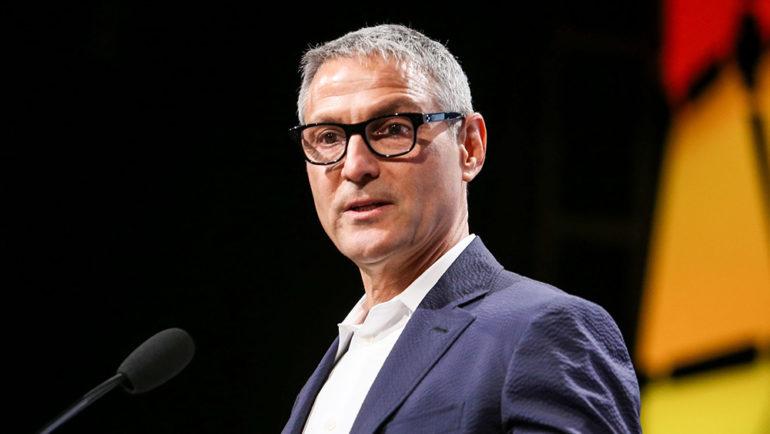Why the Timing of Endeavor’s IPO Push Is Frustrating Its Rivals
By Cynthia Littleton
LOS ANGELES (Variety.com) – Timing is everything in Hollywood. Endeavor’s formal unveiling of its plan to go public later this year couldn’t have come at a less-opportune moment.
Although ’s IPO intentions were well known, the timing of its May 23 filing with the SEC seemed at best tone-deaf to many industry insiders, coming amid the extraordinary standoff over packaging fees and other issues that threaten the long-term health of WME and the rest of the largest talent agencies.
The Writers Guild of America has gone to war with agencies over its efforts to reform the rules that govern the business relationship between talent agents and the WGA’s roughly 15,000 members. More than 7,000 guild members have fired their agents since the WGA imposed its new Agency Code of Conduct on April 12.
Endeavor’s prospectus went live just one day after the WGA and the Assn. of Talent Agents reached an agreement to resume negotiations on May 29 — after a more than six-week standoff.
The release of Endeavor’s IPO details was frustrating to some rival agency leaders, who fear it will be used by the WGA as ammo in the wrangling with ATA. In reality, the date of the disclosure was established some time ago, as Endeavor set in motion with the SEC its long-gestating plan to go public. The company could have postponed the filing until the WGA impasse had been resolved — as noted by competitors worried about the WGA dynamics — although that might have had a domino effect of delaying the rest of the IPO process. Endeavor has not indicated a target date for the public offering.
At a moment when many WGA members are shaking clenched fists, the disclosure of the hard numbers on Endeavor’s books “doesn’t help us,” lamented a senior agent at one of the Big Four agencies (WME, CAA, UTA and ICM Partners) that the WGA has sued over the packaging-fee issue.
Endeavor CEO Ari Emanuel is poised to begin a road show of presentations to Wall Street analysts, investors and banks to drum up enthusiasm for the public offering.
In the big picture, Endeavor’s IPO plan and the WGA’s aggressive posture are byproducts of the dramatic transition in what was once a smaller and more straightforward marketplace for those who craft TV shows and movies. Endeavor’s pitch to Wall Street and the creative community hinges on the notion that top talent needs a diversified entity such as itself to take advantage of market shifts and take greater control of their own destinies. Consolidation and globalization among media giants have already shrunk the number of major employers. Endeavor’s prospectus sketches out a vision of the future in which brand-name clients have an array of opportunities in partnership with the company’s production, distribution, licensing, marketing, advisory and talent representation services.
Endeavor has been on an acquisition tear since Emanuel’s scrappy start-up pulled off a merger coup with William Morris Agency in 2009. UFC, which Endeavor bought for $4 billion in 2016, is now the single biggest driver of Endeavor revenue and earnings.
In his opening letter to prospective investors, Emanuel emphasized the perils and promise of a changing business.
“As the entertainment industry moves toward a closed ecosystem model with less transparency, our clients and businesses need more insight, resources and solutions than ever before,” he wrote. “We believe being a public company will only further accelerate our ability to look around corners and open up new categories and opportunities for those in the Endeavor network.”
Endeavor’s IPO would mark the first time a talent agency would be exposed to the public markets since 1988, when ICM was taken private in a $70 million management buyout. In the 1970s and ’80s, ICM was one of a clutch of disparate businesses (from publishing to office furniture) controlled by ICM co-founder Marvin Josephson. One reason ICM ultimately went private was that the scrutiny of its quarterly earnings was a bad fit with its competitive need to offer generous pay packages to keep star agents and their clients in the fold. A generation later, that dynamic could play out again for Endeavor.
On the other hand, ICM was a bigger component of Josephson Intl.’s operations than WME is of Endeavor today. WME is housed within Endeavor’s Representation unit, which includes IMG Models and the Endeavor Content operation. That grouping will make it harder to isolate WME’s performance when the division’s financials are released. According to the prospectus, Representation is Endeavor’s second-largest unit behind Sports & Entertainment, which houses UFC and the hundreds of sports, fashion, food and lifestyle events produced annually by IMG. UFC, with its lucrative TV rights deals and live-event schedule, is the single biggest driver of Endeavor earnings.
Nonetheless, the volatility of the agency business — witness the WGA battle that few predicted would explode this year — will be a factor that will weigh on Endeavor shares. Emanuel has eased off of his hands-on representation duties as he has gone on the quest to build up Endeavor. But he’ll need his legendary agenting skills to keep his public company on Wall Street’s A-list.

